Guava (Psidium guajava L.) is one of the most important fruit crops. Guava is valued for its delicious taste and aroma. It is the process of propagating Guava plants in more fruit production.
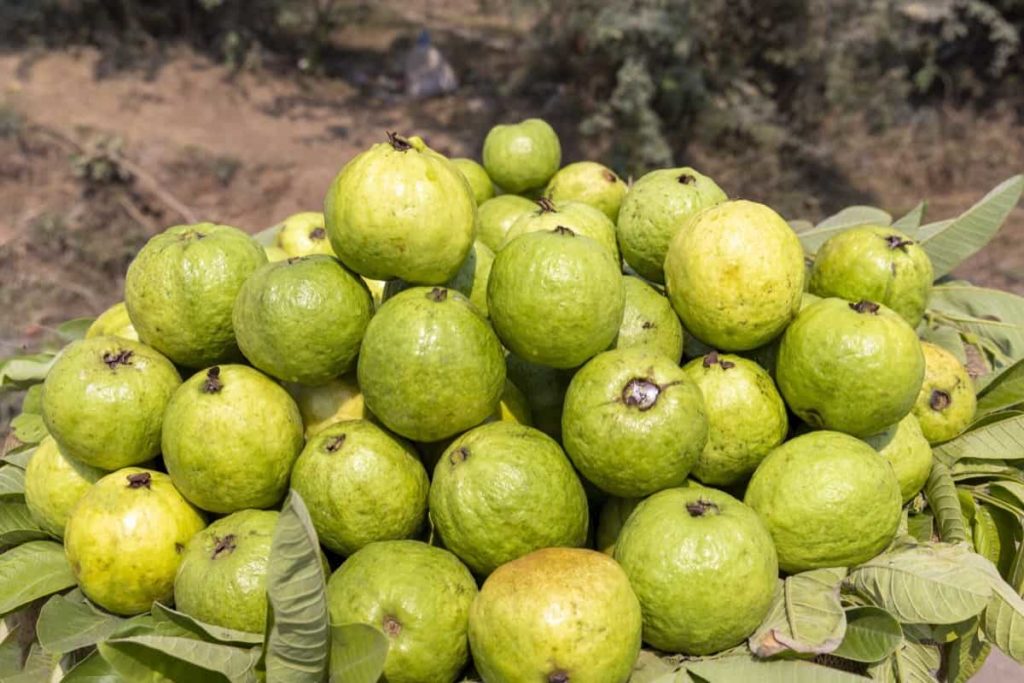
A guide to understand Guava plant/tree propagation
Can Guava grow from cuttings?
- Guava trees are generally propagated by seed or cuttings. Either method is quite simple so choose whichever works best for you.
- Cuttings produce more and better quality fruit than seeds, but seeds are cheaper.
What climate do Guavas grow best?
- Guava plants can be grown in humid and dry climates.
- Guavas can be grown in USDA zones 9 through 12. In zones 9a and 8b, Guavas should be protected from frost or cold weather. Guava will be damaged by frost.
- Plant Guava in full sun; plant Guavas in partial shade or protect the plants from afternoon sun in temperate areas.
- Plant Guava in well-drained, compost-rich soil. Guavas grow at a pH level of 6.0 to 7.0 is optimal for plant growth. Avoid planting Guavas in low-lying areas where cold air and cross-infestation can occur.
Why growing Guava from cuttings is important?
- Guava is one of the few plants that, when propagated from seed, the resulting embryos or seedlings do not inherit most of the important characteristics of the parent Guava plant, such as sweetness, fruit size, and fragrance.
- However, a Guava plant grown from cuttings usually does not lose its main characteristics and usually grows faster than a Guava grown from seeds.
How do you start a Guava from a cutting?
- Choose a well-sunlight area – Make sure the area gets at least 6 to 8 hours of sunlight daily. You’ll want to keep your Guava tree out of the shade, so find a spot where your house and other items won’t cast a shadow throughout the day. Make sure the location is in an open area so the top of your tree doesn’t collide with anything.
- Guava tree works in a wide variety of soils as long as the soil has good internal and external drainage. It simply means soil that allows water to pass easily. To test this type of soil, dig a 1-foot (0.30 meters) hole and add a little water. If it continues to sit, you will need to find another location.
- It would help if you avoided shallow soils and compact, layered soils. It is difficult for your roots to spread. If soil is hard and compact, you can add compost to help it reach the right conditions.
- When choosing Guava cuttings, choosing a healthy stem that has matured to a relatively mature point for new growth is best. Cut about 4- to 6-inch softwood cuttings from a healthy Guava tree.
- Cuttings should be flexible and not split when bent. Remove the top two leaves. Dip the bottom of the cuttings in rooting hormone and then plant in a moist potting mix. A 1-gallon container will hold approximately four cuttings. Cover the container with clear plastic. Use plastic straws to hold the plastic over the leaves if necessary. Alternatively, cut a plastic soda bottle in half and place it on top of the pot. Watch for new tree growth to appear in two to three weeks, which indicates that the cuttings have rooted. Remove the plastic at this point.
- Water carefully to keep the potting soil moist, and transplant the rooted cuttings into a larger container. Please place them in a warm room or an outdoor shelter until the tree is mature enough to survive on its own.
In case you missed it: A Step-By-Step Guide to High Density Fruit Farming: For Guava, Banana, Mango, Pineapple, Lemon, Papaya, Litchi, and Apple
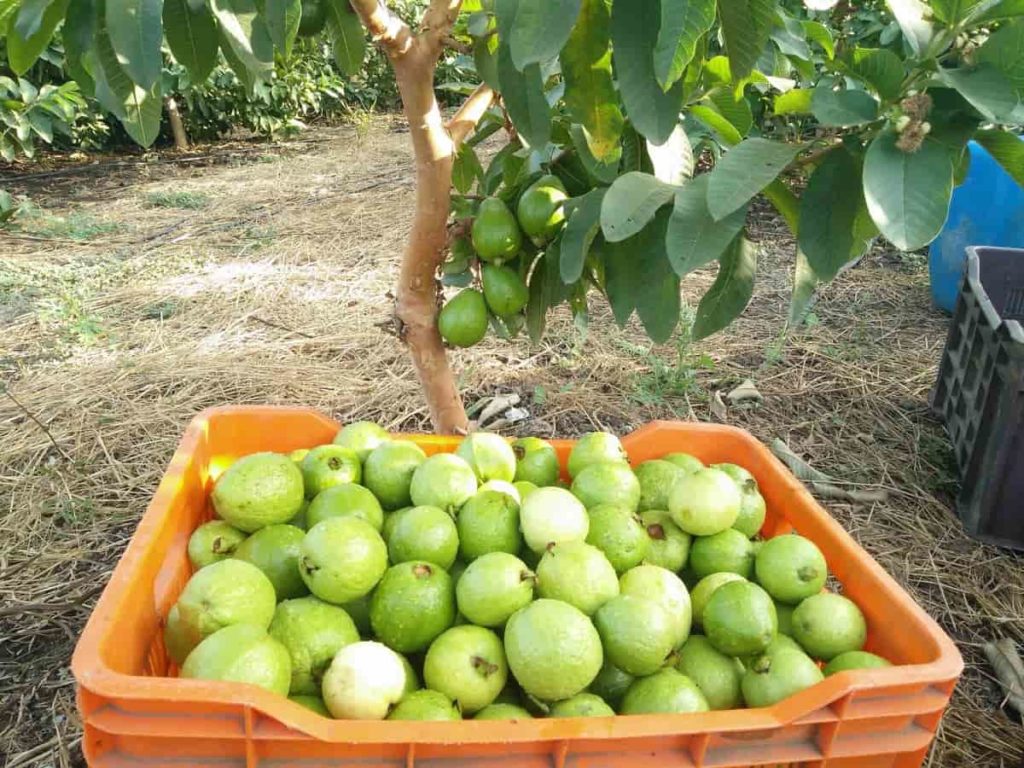
Can you grow Guavas in pots?
- Choose a container at least 18 to 24 inches (46-61 cm) across and at the same depth.
- Make sure the container or pot has proper drainage holes. These hardy plants are adaptable, making them excellent fruit tree candidates for Guava trees in containers.
- Potted plants can grow well on a heated patio or deck in the warmer months, then moved indoors in the winter.
- Your young Guava plants can be started in small pots. However, you’ll want to regularly pot them into larger containers as they grow to keep them happy. Ultimately, you’ll want your mature Guava trees in the largest containers you can manage to move with a hand truck, roller, or another pot-moving device.
- Plants grown indoors require much fewer inputs (water and fertilizer) than plants grown in containers. The reason is very simple: in a pot/container, plant roots can only reach the perimeter of the container for water and nutrients. These hardy plants are adaptable, making them excellent fruit tree candidates for Guava trees in containers. Choose a spot for your container to grow Guavas in full sun.
What is the most popular method of propagation in Guava?
Air layering is practically a commercial method for growing Guava. The best time to plant Guava in hot and humid climates is between April and June, with relative humidity between 69.0 and 80.0 percent. A shoot from the previous year’s 1 cm diameter growth is selected for air layering. The area is covered with wet sphagnum moss and tied with polyethylene film. Roots appear in about 30-40 days. Air layering propagates new trees and shrubs still attached to the parent plant. The stem is wrapped with moist moss to encourage root formation.
How do you transplant Guava seedlings?
Gently lift the root ball and set it on a piece of untreated natural burlap. Wrap burlap around the roots, move the plant to its new location, and place the root ball in the new hole. When you are moving Guava trees, plant them in the new location at the same depth of soil as the old location.
Can the Guava tree be grafted?
Patch budding is the common method for grafting Guava trees. When transplanting a Guava tree, you must select a straight and strong specimen for your roots as a first step. Grafting was done on 6–8 months old rootstock, which has attained a stem circumference of 0.5–1 cm. The scion shoots with 4 healthy buds of pencil thickness 15 cm long were selected for grafting.
In case you missed it: Fertilizer Management in Guava Trees – Organic, Liquid, Natural, NPK, and Homemade
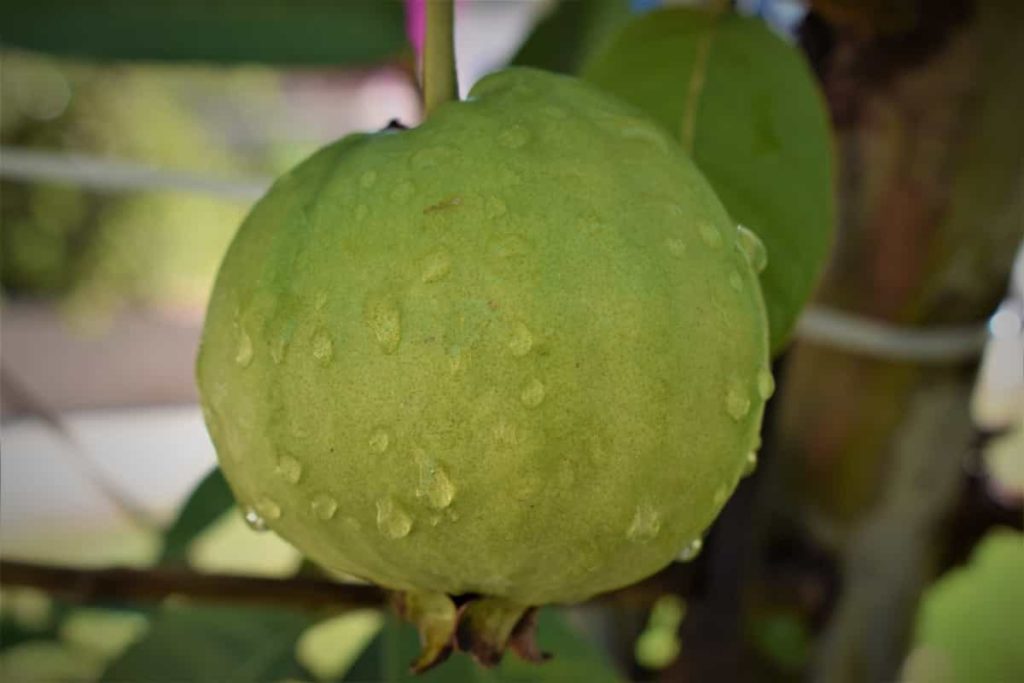
How do you propagate a Guava from seed?
The first step in growing Guava from seed is to break the seed’s dormancy. Guavas propagated from seeds germinating in about three weeks. For this purpose, fresh, fully ripe fruit seeds should be used. Plants can be raised in polythene bags or nurseries. Seed viability decreases rapidly after removal from the fruit.
Considering the hard seed coat, it is important to pour boiling water over the seeds and soak them in water for 2 weeks before sowing or treat them with strong sulfuric acid for five minutes to facilitate germination. However, it is not necessary to grow a Guava plant in seed form, as the seedling trees are very different from their mother plants.
How do I keep my Guava plant healthy?
- Guava trees thrive in soil with good drainage and full sun for excellent flower and fruit production. Growing Guava from cuttings requires specific temperature and humidity; this method is suitable in hot climates.
- Guava does not require frequent deep watering. During hot weather conditions and the growing season, water Guavas deeply twice a month. During the winter months, Guavas are drought resistant, so water sparingly.
- The Guava plant has shallow roots that absorb water and nutrients quickly. Feed them with an organic, granular fertilizer once every three months.
How do I make Guava fruit bigger?
- Guavas require little pruning to produce fruit happily, but you can give the bush a single stem shape to encourage taller growth. Trim the evergreen Guava bush into a tree, starting when planted.
- Prune the tree again in the fall or early winter.
- Guava trees are generally pruned between November and December in the winter and between March and April in the spring.
- Pruning is also important to increase fruit size and yield. During the first harvest, the Guava tree needs to be cut at a height of 2 feet, and it will promote branch growth within a month.
- While pruning a Guava tree, we should pick one trunk and 3 to 4 lateral branches and remove all the remaining shoots. When pruning a Guava tree, make sure you cut the back branches at an angle so that water does not stand on it and damage the branches.
- Trim the evergreen Guava bush into a tree, starting when planted. Select the strongest straight stem as the main stem and cut the rest to ground level.
- Prune the tree again in the fall or early winter. Cut off all upright shoots that compete with the main stem, including suckers growing on the sides of the bush. Do not cut the canopy until the tree is well advanced.
- Trim the Guava tree the following spring to remove water shoots — the fast-growing upright shoots that form just below the pruning wound. Remove all branches that extend from the lower 4 feet of the trunk to encourage a taller canopy. Select several strong lateral branches spaced evenly around the tree to act as a framework for the canopy. Cut these branches to half their length and the lateral branches outwards. Remove all competing branches.
Why does the Guava fruit drop?
- They were dropping after fruit set is caused by factors other than pollination, such as calcium deficiency. Guava clones have some degree of self- and cross-incompatibility in Guava. These incompatibilities result in inhibition of pollen tube development in style.
- Fruit drop in Guava is a serious disorder resulting in about 45-65% loss due to various physiological and environmental factors. GA spray has been found effective in reducing fruit drops in Guava. Guava bronze has been observed in places where soil fertility is low, and pH is low.
Why my Guava tree is not fruiting?
A Guava tree with no fruit can also result from a pollination problem. There are many reasons why your Guava tree may not bear fruit. So, if your Guava plant is not bearing fruit, you should check the following factors.
1. Lack of sunlight – Guava plants require full sunlight for optimum growth, flowering, and fruit production. On the other hand, if your area is very hot or cold, the Guava plant cannot tolerate it. As a result, the Guava plant cannot bear fruit.
In case you missed it: Organic Guava Cultivation, Farming Practices
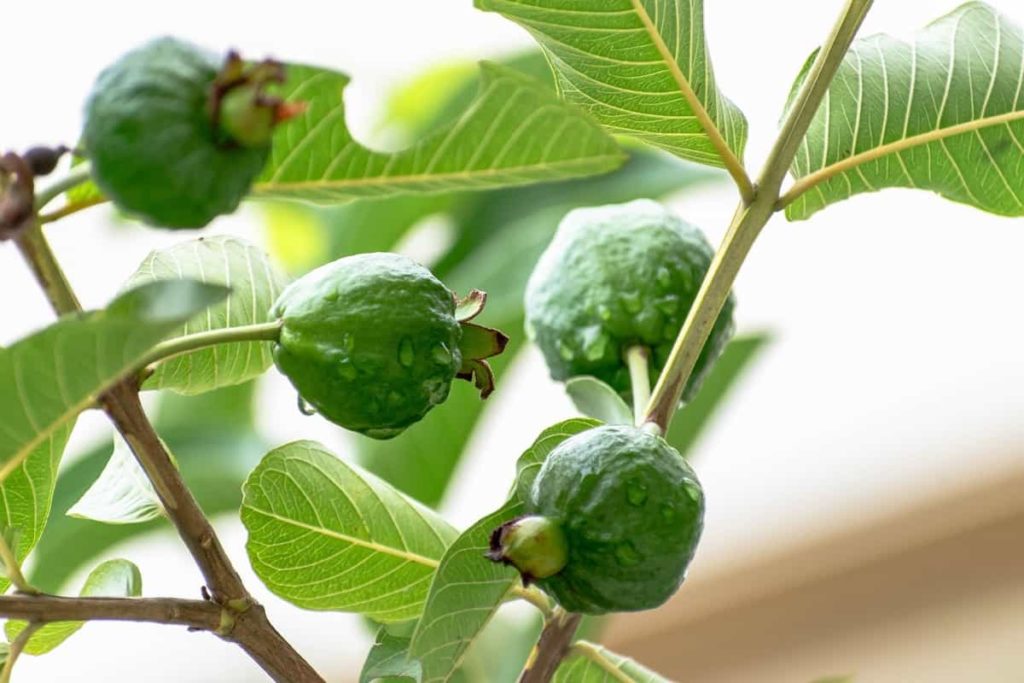
2. Lack of pollination – When Guava plants are in effect, they are a great fan of pollination. Therefore, if the flowers are not pollinated properly, it will result in fruit failure. However, if your plant is blooming, that’s a good sign. Then fertilizing the blooming flowers is the next step in obtaining Guava fruit. Guava is a self-fruitful plant. So, they can get a 15% yield on their own. You can increase yield by about 40% by hand pollination. Also, you can increase the yield by cross-pollination.
3. Lack of irrigation – The Guava plant needs better irrigation for fruiting, survival, and growth. So, if your Guava plants don’t have proper irrigation, they don’t tend to give you fruits.
How to feed a Guava tree?
Guavas are heavy feeders, requiring more nutrients than an average plant. Keeping pace with this fast-growing plant requires regular applications of Guava tree fertilizer to ensure high-quality flower and fruit production. This NPK bio-fertilizer provides nutrients like potassium, phosphorus, and nitrogen to crops and allows Guava plants to grow bigger and faster.
Organic fertilizers like cow dung, goat manure, or chicken manure can also be used for Guava trees. Also, it helps in plant growth, root and stem growth, and photosynthesis. In a few weeks, more lateral branches will start growing, and in two months, the Guava plants will start flowering, and the plants will start producing Guavas.
When to fertilize Guava trees?
Avoid feeding Guava trees from late fall to mid-winter. For new plantings, it is recommended to fertilize once a month during the first year after the plant shows signs of new growth. A half-pound (226 grams) of fertilizer per tree is recommended for fertilizing Guava trees. During successive years of growth, you will increase the frequency of fertilization to three to four times a year, but you will increase the fertilizer dose to two pounds per tree per feeding. A copper and zinc nutrient spray is also recommended for fertilizing the Guava tree.
Do Guava trees need to be transplanted?
Since any variety of fruit is possible, grafting has become standard to ensure a Guava tree that is true to type. Always graft during the dormant season, shortly before the first leafing.
Why is my Guava tree dying?
Anthracnose is a common fungus problem for many plants, including Guava. It needs sunlight to provide large amounts of energy to the flowers and fruits. Guava trees do not bear fruit for many years and may take four years to bear fruit. Young Guavas are vulnerable to pests, including aphids, mealy bugs, scale, and whitefly. Identify the infection as early as possible and treat it with the least toxic option.
In case you missed it: Guava Pests, Diseases, and Control, Guava Plant Care
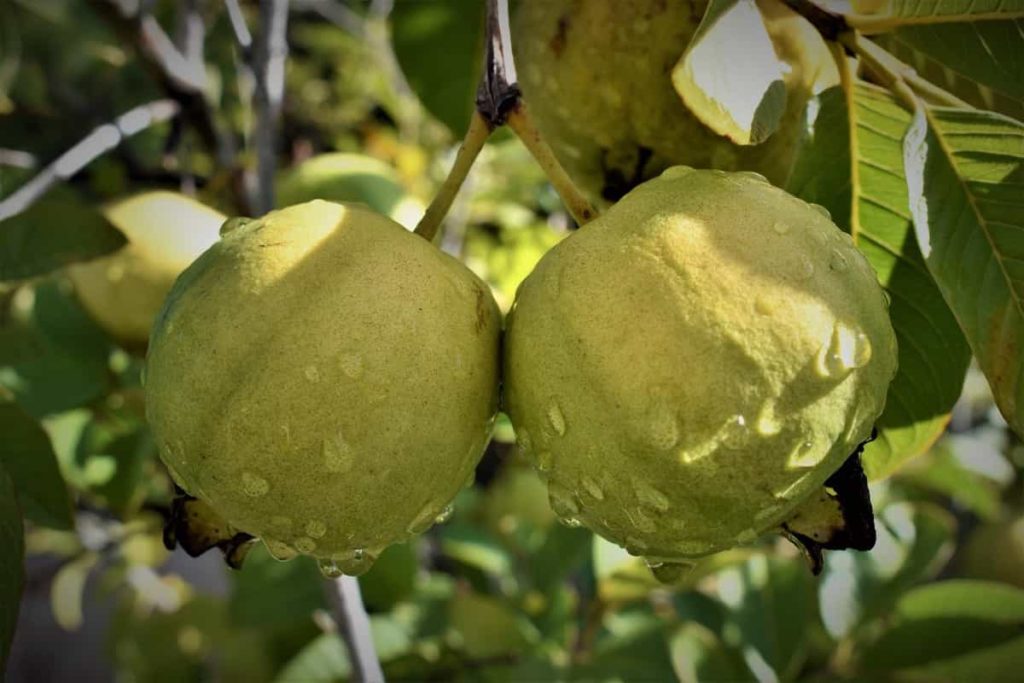
Which fertilizer is best for Guava?
- A Guava tree fertilizer with a ratio of 6-6-6-2 (nitrogen-phosphorus-potassium-magnesium) is recommended. For each feeding, spread the fertilizer evenly over the ground, starting one foot from the trunk and then spreading to the tree’s drip line.
- The Guava tree is a heavy feeder, so it must be fertilized every 1-2 months when young 3-4 times a year after that.
- Guava trees require fertilizers containing nitrogen, phosphorus, potash, and some magnesium for maximum fruit production. Add 6-6-6-2 fertilizer to the soil at the beginning of the growing season and 3-4 times during growth. Potassium-rich fertilizer is the best fertilizer to increase fruit production.
- Fertilize with iron sulfate 1-2 times per year. Always water your plant after fertilizing to minimize the risk of burns.
Should Guava trees be pruned?
- Prune your Guava tree annually in late winter or early spring. Guava fruit on new growth.
- Annual pruning will promote growth and increase fruit production.
- During the first year, prune the tree to establish a shape, leaving a trunk and three or four lateral branches for a classic ‘tree’ look.
How are Guavas pollinated?
- The tree blooms in early spring but can bloom year-round in milder climates. A Guava tree has perfect flowers with male and female parts in each flower.
- Bees pollinate Guava flowers. If you don’t have bees in your area, you can pollinate the flowers with your hands. Use a small paint brush and tickle the inside of the flowers.
- Spray your Guava tree with a 5% solution of urea mixed with a wetting agent before flowering; water the Guava plant when the urea spray dries. It will increase the period of fruit production.
What should be the distance between two Guava trees?
- Guava plants are usually spaced 5-8 meters apart.
- The correct planting distance is determined according to the variety, soil fertility, and availability of irrigation facilities. The standard distance is 6 meters x 6 meters
Does a Guava tree need a lot of water?
- After planting, water Guava trees every other day and then once a week for the first year.
- Guava tea appreciates deep water but allows the soil to dry out before watering again. It also likes good organic mulch.
What month do you harvest Guava?
Guava cultivation is done throughout the year (except in May and June) in some parts of the country. However, the peak harvesting period in North India is August for the rainy season crop, March-April for the spring season crop, and November-December for the winter crop.
In case you missed it: Guava Grafting Methods; Pruning Methods; Training
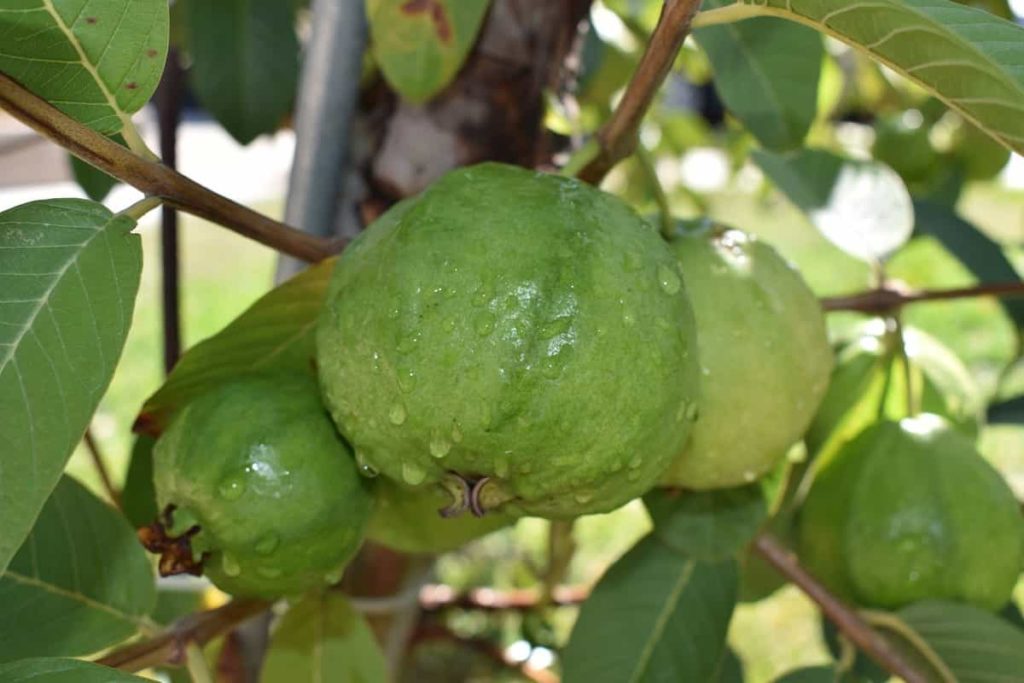
How is Guava cultivated?
- Guava fruit ripens in 2-4 months after blooming. The Guava fruit remains hard and green but changes color and softens when ripe. Picked green fruits will ripen when stored at room temperature. Usually, red or pink Guavas are picked when the peel turns pale green to yellow.
- The Guava fruit is then allowed to ripen further in the room temperature zone. White Guavas are picked when they are full size and light green to green. It is eaten before ripening when the skin is yellow, and the fruit is soft.
- Yield depends on age, cultivation style, and cultural practices. Guava’s best taste and aroma are obtained when it ripens on the tree. In most commercial varieties, fruit ripening is indicated by the yellowing of the skin. The fruits are handpicked along with the stalks and leaves.
Conclusion
Guava is an evergreen tree in the family Myrtaceae and has grown for its edible fruit. Guava has a thin stem with smooth green to red-brown bark. Growing a Guava tree is easier than you think, and if done right, it can produce fruit with more vitamin C than oranges. This information gives you an understanding of how to propagate Guava plants and tips for growing Guava plants.
- Types of Pesticides Used in Agriculture: A Beginner’s Guide
- Economical Aquaculture: A Guide to Low-Budget Fish Farming
- 15 Common Planting Errors That Can Doom Your Fruit Trees
- How to Make Houseplants Bushy: Effective Tips and Ideas
- Innovative Strategies for Boosting Coconut Pollination and Yield
- Pollination Strategies for Maximum Pumpkin Yield
- The Complete Guide to Chicken Fattening: Strategies for Maximum Growth
- Natural Solutions for Tulip Problems: 100% Effective Remedies for Leaf and Bulb-Related Issues
- Revolutionizing Citrus Preservation: Towards a Healthier, Greener Future
- Natural Solutions for Peony Leaf and Flower Problems: 100% Effective Remedies
- Maximizing Profits with Avocado Contract Farming in India: A Comprehensive Guide
- Natural Solutions for Hydrangea Problems: 100% Effective Remedies for Leaf and Flowers
- The Ultimate Guide to Choosing the Perfect Foliage Friend: Bringing Life Indoors
- From Sunlight to Sustainability: 15 Ways to Use Solar Technology in Agriculture
- The Ultimate Guide to Dong Tao Chicken: Exploring from History to Raising
- The Eco-Friendly Makeover: How to Convert Your Unused Swimming Pool into a Fish Pond
- Mastering the Art of Delaware Chicken Farming: Essentials for Healthy Backyard Flocks
- 20 Best Homemade Fertilizers for Money Plant: DIY Recipes and Application Methods
- How to Craft a Comprehensive Free-Range Chicken Farming Business Plan
- Brighten Your Flock: Raising Easter Egger Chickens for Beauty and Bounty
- How to Optimize Your Poultry Egg Farm Business Plan with These Strategies
- Subsidy for Spirulina Cultivation: How Indian Government Schemes Encouraging Spirulina Farmers
- Ultimate Guide to Raising Dominique Chickens: Breeding, Feeding, Egg-Production, and Care
- Mastering the Art of Raising Jersey Giant Chickens: Care, Feeding, and More
- Ultimate Guide to Raising Legbar Chickens: Breeding, Farming Practices, Diet, Egg-Production
- How to Raise Welsummer Chickens: A Comprehensive Guide for Beginners
- How to Protect Indoor Plants in Winter: A Comprehensive Guide
- Ultimate Guide to Grow Bag Gardening: Tips, Tricks, and Planting Ideas for Urban Gardeners
- Guide to Lotus Cultivation: How to Propagate, Plant, Grow, Care, Cost, and Profit
- Agriculture Drone Subsidy Scheme: Government Kisan Subsidy, License, and How to Apply Online
- Ultimate Guide to Raising Araucana Chickens: Breed Profile, Farming Economics, Diet, and Care
- Bringing Hydroponics to Classroom: Importance, Benefits of Learning for School Students
- Ultimate Guide to Raising Polish Chickens: Breed Profile, Farming Economics, Diet, and Care
- Ultimate Guide to Raising Australorp Chickens: Profile, Farming Economics, Egg Production, Diet, and Care
- Silkie Chicken Farming: Raising Practices, Varieties, Egg Production, Diet, and Care
- Sussex Chicken Farming: Raising Practices, Varieties, Egg Production, Diet and Care
I want more information about guava and Mango tree